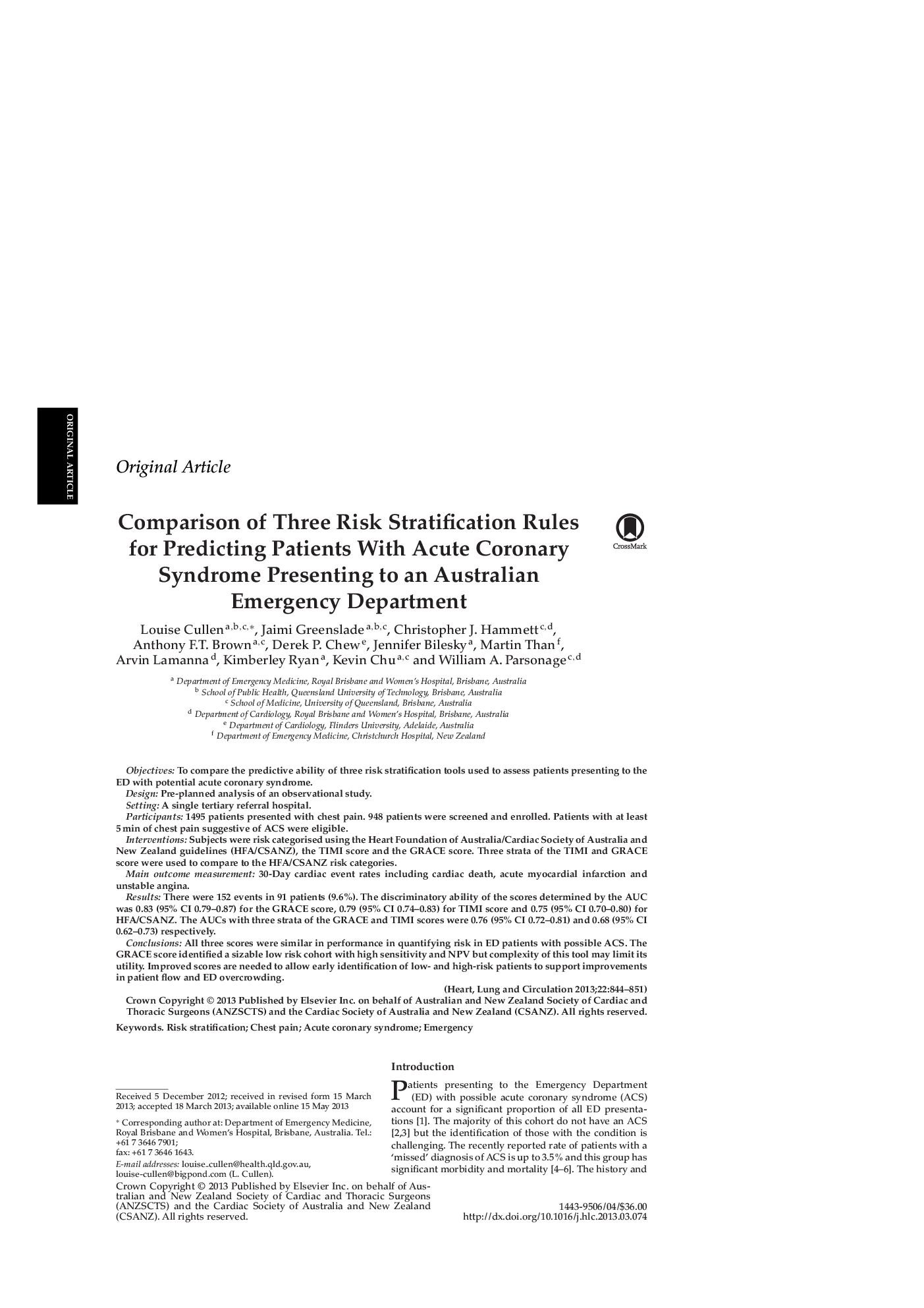| Article ID | Journal | Published Year | Pages | File Type |
|---|---|---|---|---|
| 2917763 | Heart, Lung and Circulation | 2013 | 8 Pages |
ObjectivesTo compare the predictive ability of three risk stratification tools used to assess patients presenting to the ED with potential acute coronary syndrome.DesignPre-planned analysis of an observational study.SettingA single tertiary referral hospital.Participants1495 patients presented with chest pain. 948 patients were screened and enrolled. Patients with at least 5 min of chest pain suggestive of ACS were eligible.InterventionsSubjects were risk categorised using the Heart Foundation of Australia/Cardiac Society of Australia and New Zealand guidelines (HFA/CSANZ), the TIMI score and the GRACE score. Three strata of the TIMI and GRACE score were used to compare to the HFA/CSANZ risk categories.Main outcome measurement30-Day cardiac event rates including cardiac death, acute myocardial infarction and unstable angina.ResultsThere were 152 events in 91 patients (9.6%). The discriminatory ability of the scores determined by the AUC was 0.83 (95% CI 0.79–0.87) for the GRACE score, 0.79 (95% CI 0.74–0.83) for TIMI score and 0.75 (95% CI 0.70–0.80) for HFA/CSANZ. The AUCs with three strata of the GRACE and TIMI scores were 0.76 (95% CI 0.72–0.81) and 0.68 (95% CI 0.62–0.73) respectively.ConclusionsAll three scores were similar in performance in quantifying risk in ED patients with possible ACS. The GRACE score identified a sizable low risk cohort with high sensitivity and NPV but complexity of this tool may limit its utility. Improved scores are needed to allow early identification of low- and high-risk patients to support improvements in patient flow and ED overcrowding.
